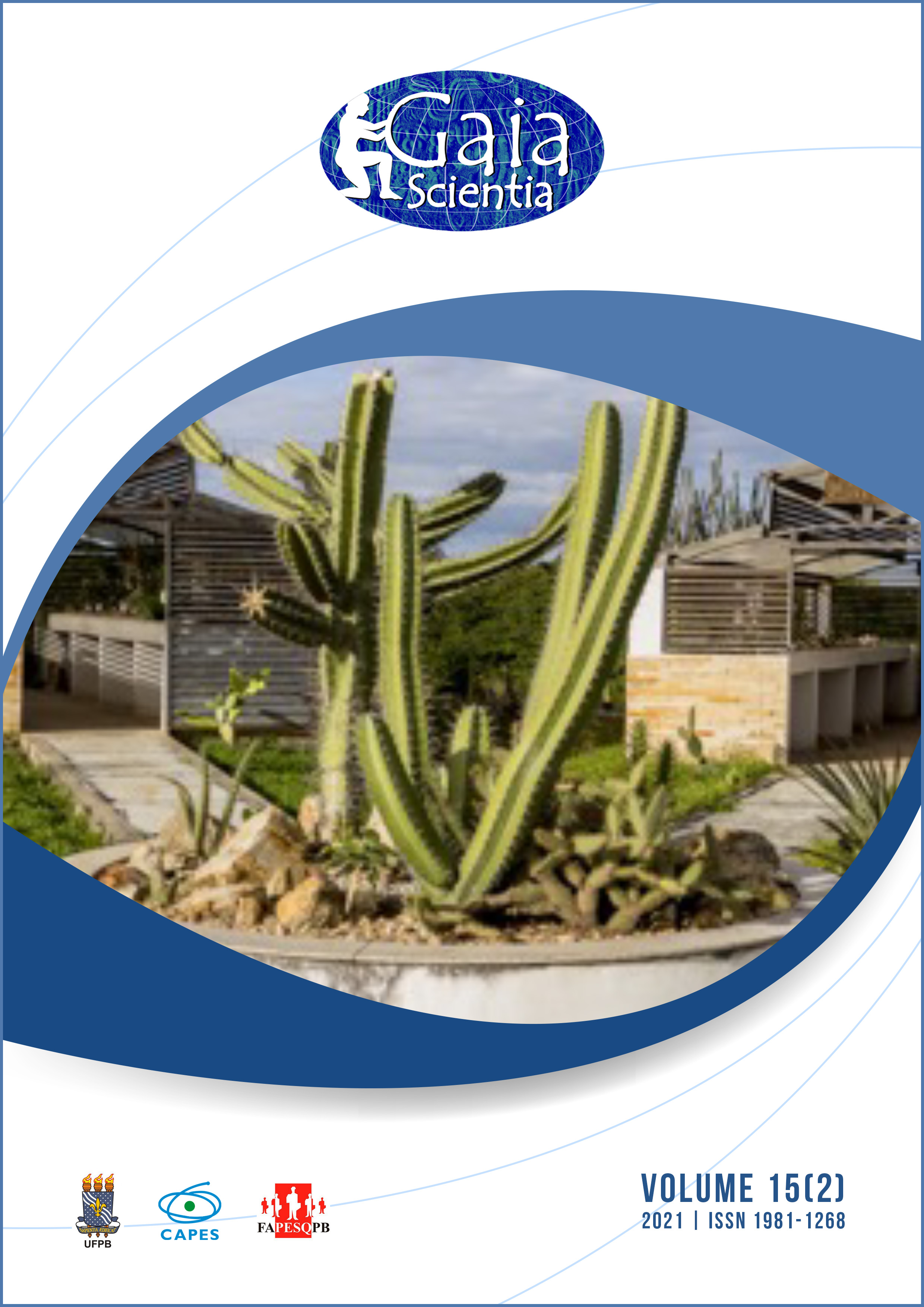Effect of soil solarization on spontaneous herbs control in a Caatinga area in Paraíba, Brazil
DOI:
https://doi.org/10.22478/ufpb.1981-1268.2021v15n2.57243Abstract
The Caatinga is a biome that occurs exclusively in Brazil, being characterized by low rainfall and high temperatures throughout the year. Anthropogenic actions (e.g. agricultural and urban activities) are the main factors of degradation of this biome, favouring the emergence of spontaneous herbs (weeds), which establish themselves vigorously after ecological disturbances. Therefore, the aim of this study was to evaluate the effect of soil solarization on the emergence of spontaneous herbs in a Caatinga area, Paraíba state, Brazil. The experiment was conducted at the National Institute of Semiarid (INSA), through an entirely randomized experimental design, arranged in a factorial scheme, with four treatments and nine replications: (autoclaved soil; solarized soil; natural soil; solarized soil + cattle manure). The germination of 67 seedlings belonging to 13 spontaneous herbs species in the natural soil treatment were reported, with 7 seedlings belonging to 5 species and solarized soil + cattle manure treatment. Poaceae was the predominant family, with five species. The solarization soil presented total suppression of germination, as well as the autoclaved soil, in which only one species germinated. The soil solarization for 45 days under the edaphoclimatic conditions of the Campina Grande municipality, Paraíba, completely inhibited the emergence of spontaneous herbs in the Caatinga soil.










